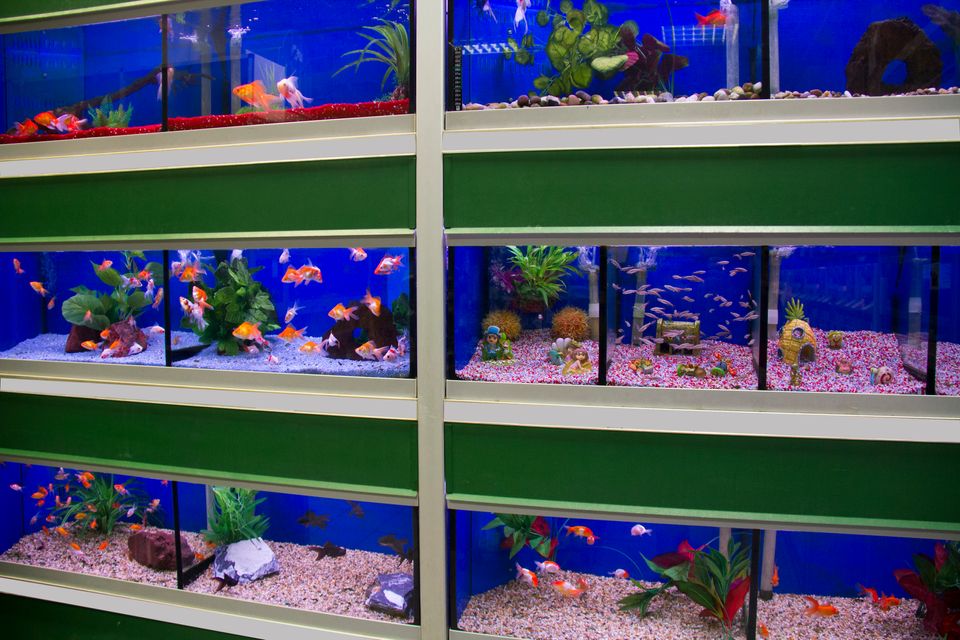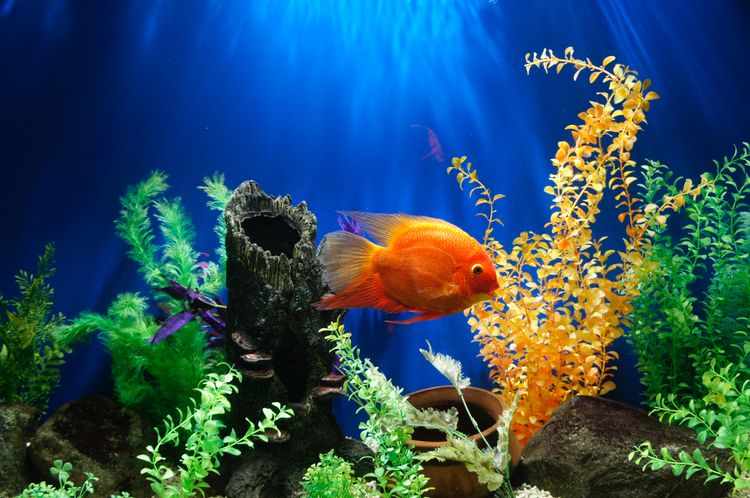How to Choose the Perfect Fish for Your Freshwater Aquarium: A Beginner’s Guide

There's SO MANY different kinds of freshwater fish available to keep in home aquariums. Whether you're just starting out in the hobby or you consider yourself to be a novice who wants to take your hobby to the next level, it's easy to feel overwhelmed by all the possibilities. Fish keeping should be fun! What follows is an easy guide to help you select the right fish for your tank to create the thriving underwater paradise you envision.
Aquarium Size Matters!
It's important to begin with the basics: tank size. Starting with the right tank will set the stage for a thriving aquatic ecosystem. Here's what you need to consider:
- Tank dimensions: Consider the space you have available for your aquarium. Keep in mind that larger tanks offer more stability, making it easier to maintain water quality and temperature.
- Fish size and growth potential: Factor in the size of your fish and their growth potential. For example, a 10-gallon tank may suffice for small tetras, but will not accommodate larger cichlids.
- Fish population (stocking): Think about how many fish you'd like to keep. A general rule of thumb is 1 inch of fish per gallon of water, but this can vary depending on the fish species and their activity levels.
Fish Size and Compatibility: Keeping Your Aquarium Harmonious
One of the keys to a successful aquarium is a harmonious community. Here are some tips for selecting fish that get along swimmingly:
- Research the fish species: Learn about the temperament, size, and preferred living conditions of the fish you are interested in. Choose fish with similar requirements to ensure compatibility.
- Avoid overcrowding: Overcrowding can stress fish and lead to disease or aggression. Plan your stocking levels wisely (more on that later).
- Create hiding spots: Provide ample hiding places for your fish, such as rocks, driftwood, or aquatic plants. This allows them to establish territories and coexist peacefully.
Water Quality Needs: What is the Perfect Environment for Your Future Fish?
Water quality is crucial for a healthy, thriving aquarium. Here's what you need to know in order to select your fish and keep them happy and healthy:
- Understand water parameters: Different fish species have specific water requirements, including pH, hardness, and temperature. Research these requirements and test your water regularly to ensure it meets their needs.
- Invest in the right filter: A reliable filtration system is vital for maintaining clean, clear water. Some fish prefer fast moving water flow, while others would get stressed and sick having to constantly fight a strong current. Different types of filters and how they are placed impact water movement in different ways. Also consider if your fish and desired stocking levels might require mechanical and chemical filtration capabilities, in addition to biological.
- Assess the time you have for regular maintenance: Some types of fish are MESSY (they poop A LOT). Depending on the species and stocking levels you want to keep, you'll need to figure out what type of ongoing maintenance might be needed and if you realistically have the time to keep up with it. Keeping lots of larger fish or high stocking densities will require you to stay on top of water changes and tank cleanings to prevent the buildup of harmful waste and chemicals.
Aesthetics and Themes: Crafting Your Underwater Masterpiece
Now for the fun part—designing your aquarium! With so many kinds of fish of different sizes, shapes, colors, and personalities, you can really approach your fish tank as a work of art. Here are some ideas to spark your creativity:
- Biotope aquariums: Recreate a specific natural habitat, such as the Amazon River or an African lake. Choose fish, plants, and decorations that mimic the chosen environment.
- Themed aquariums: Create a whimsical underwater world, like a shipwreck, fairy tale, or your favorite movie. Just remember to prioritize your fish's needs over aesthetics.
- Colorful community tanks: Mix and match fish species with vibrant colors and patterns. Choose complementary or contrasting colors to create a stunning visual display. A single larger fish that is appropriate for your tank size and other inhabitants could serve as a "showpiece" for your aquarium.
- Aquascaping: Embrace the art of aquascaping by designing a captivating underwater landscape that keeps your specific fish happy and healthy. Use rocks, driftwood, and live plants to create depth, balance, and natural beauty.
Water Column Preferences: Understanding Your Fish’s Habitat
Fish have preferences for different parts of the water column—top, middle, or bottom. Creating a diverse community with fish that occupy different layers will make your aquarium more interesting and engaging. Here’s how to choose fish for each level:
- Top-dwelling fish: Species like hatchetfish, guppies, Endler's livebearers, and bettas prefer the water’s surface. They often have upturned mouths, making it easier for them to feed at the top.
- Middle-dwelling fish: Many popular community fish, such as tetras, barbs, and angelfish, prefer the mid-water zone. These species often showcase striking colors and patterns.
- Bottom-dwelling fish: Species like corydoras, loaches, and plecos inhabit the lower regions of the tank. These fish often have unique body shapes and behaviors, adding interest to the aquarium floor.
Stocking Levels: Finding the Right Balance
Striking the right balance in stocking levels is essential to maintain a healthy, thriving community. Some species of fish really need to be kept together in larger groups in order to reduce stress and stay healthy. The fish you'd like to keep might be small, but if they are a schooling species, can your tank size accommodate a group of 6 or more? Here are some guidelines to help you:
- Start slow: Gradually introduce fish to your aquarium to allow the biological filtration to adjust to the increased bioload. Adding too many fish at once can cause ammonia and nitrite spikes, which are harmful to your fish.
- Consider activity levels: Active fish require more space than sedentary ones. Adjust stocking levels based on the swimming habits and energy levels of your chosen species.
- Factor in maintenance: As mentioned before, the more fish you have, the more maintenance your tank will require. Ensure you’re prepared to dedicate time to tank upkeep.
Conclusion
Now that you're armed with the knowledge to choose the perfect fish for your freshwater aquarium, it's time to dive in and create your own underwater oasis. Remember, research is key—learn about the fish you want to keep and set up an appropriate environment for them. With a bit of patience, creativity, and dedication, you'll soon have a thriving aquarium that brings joy and serenity to your life.


Comments ()